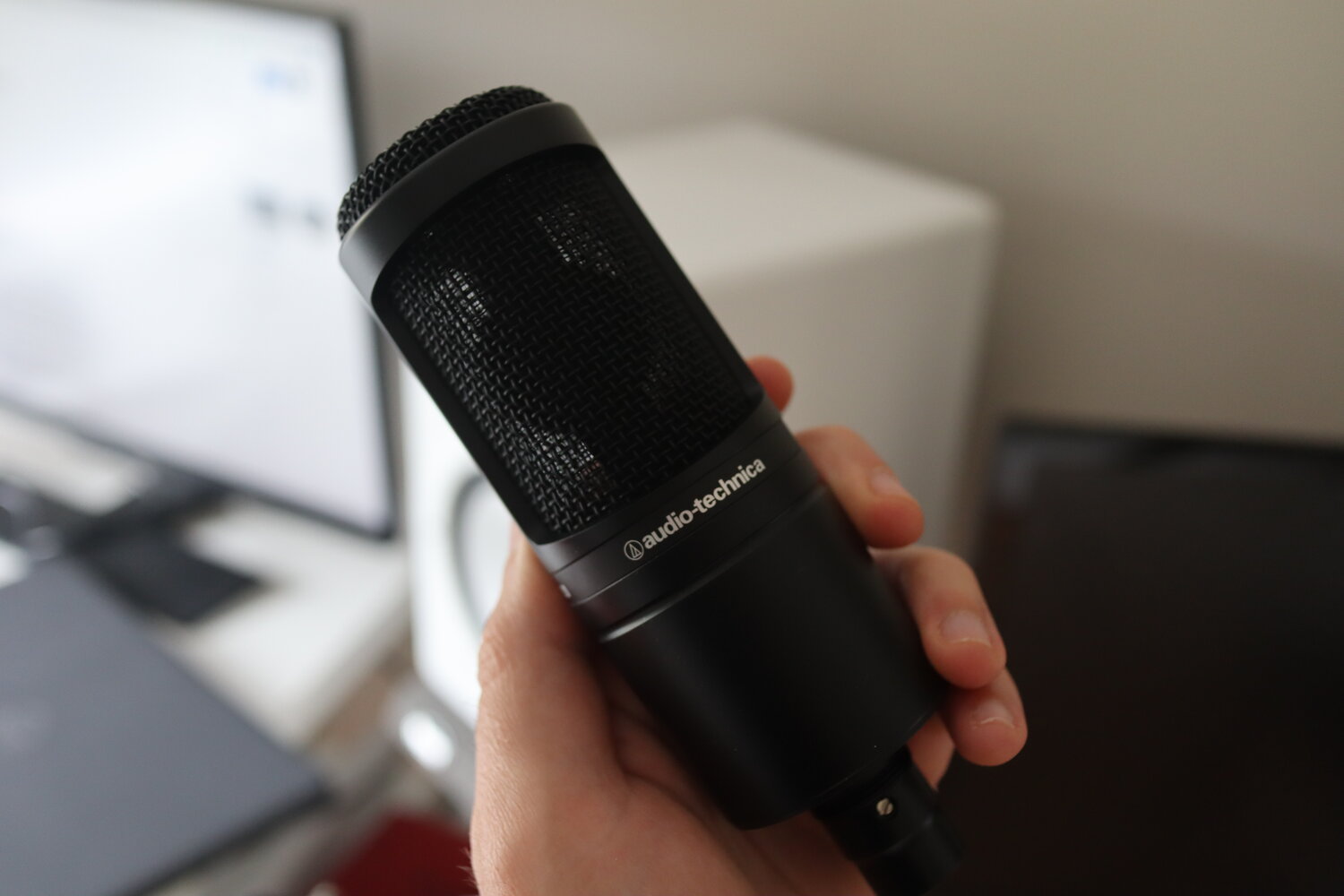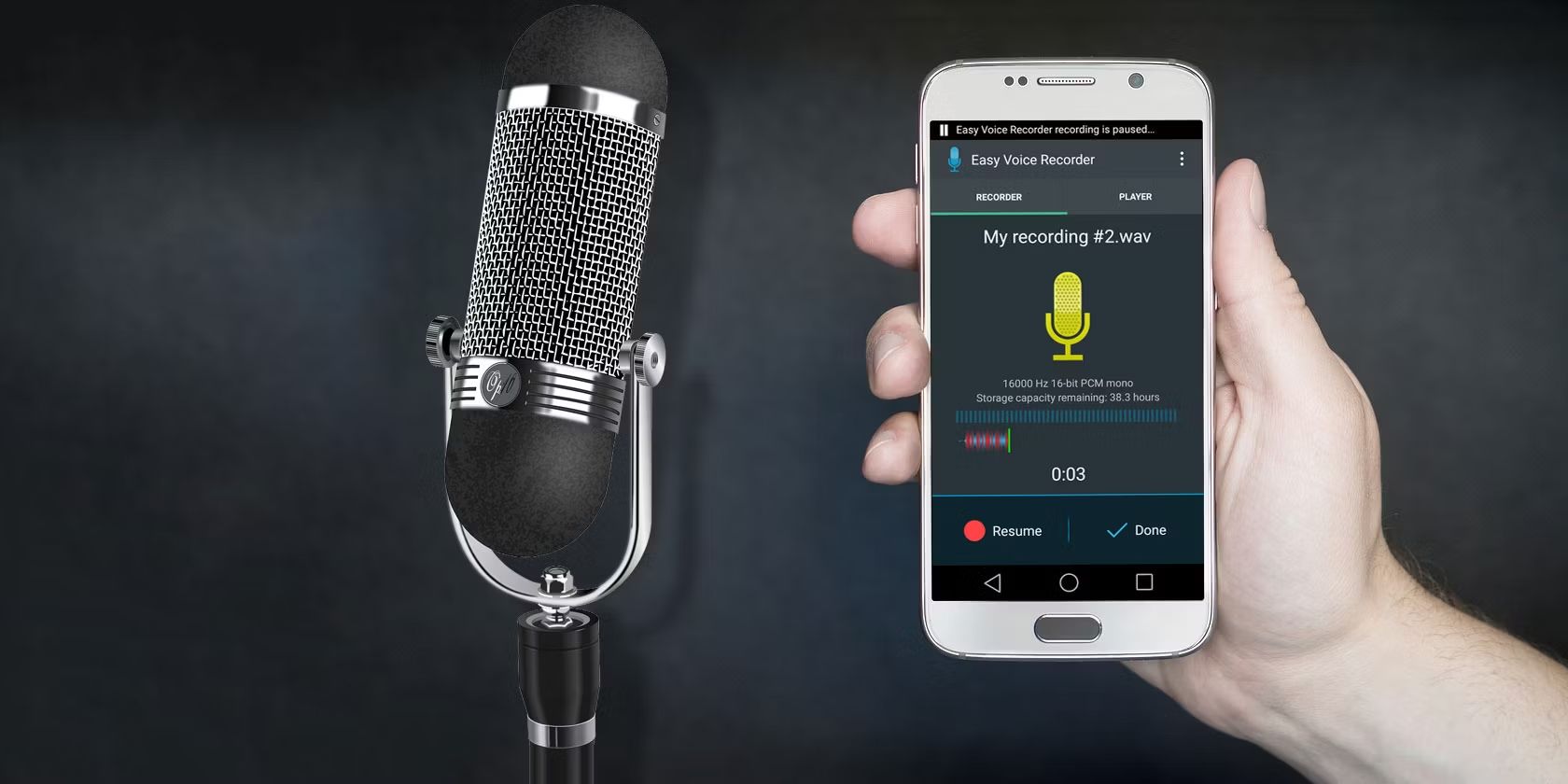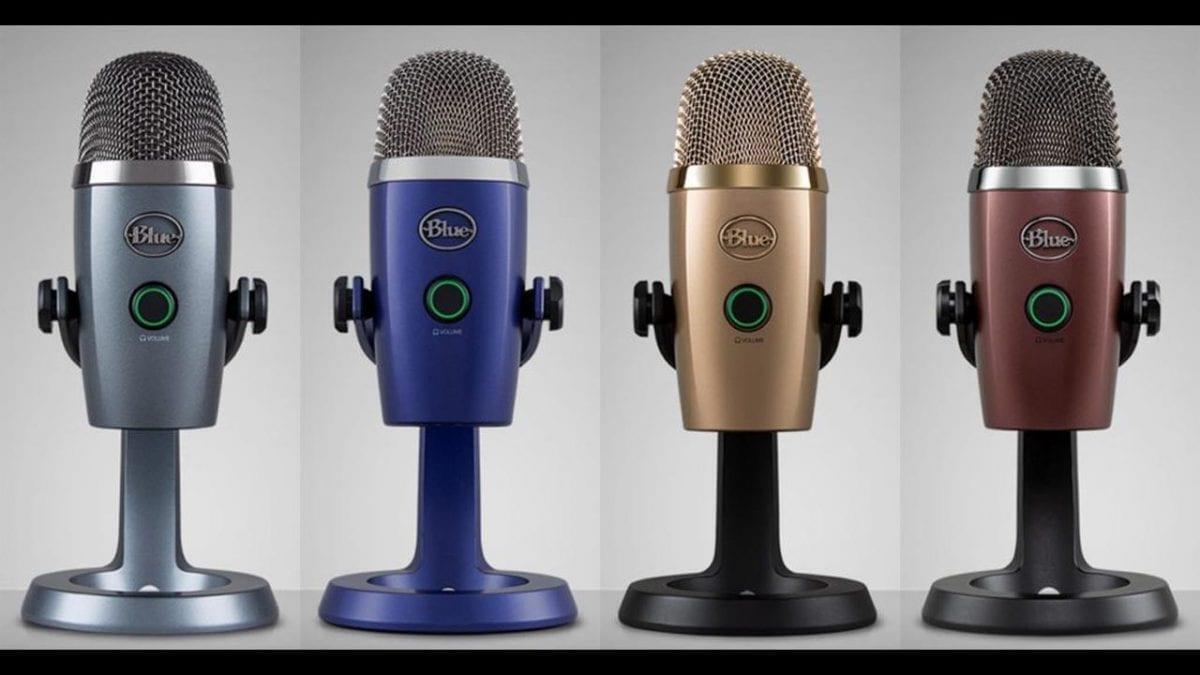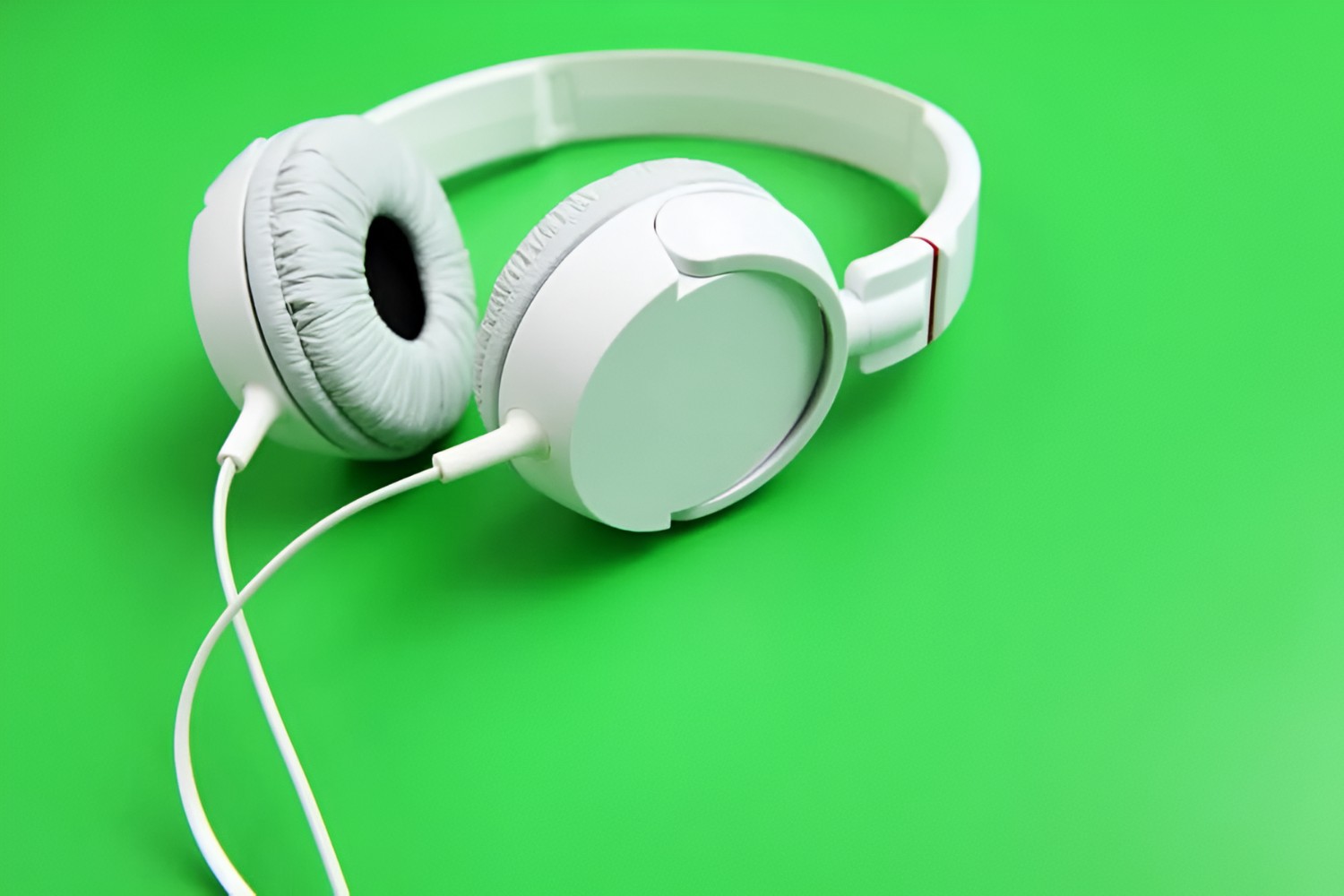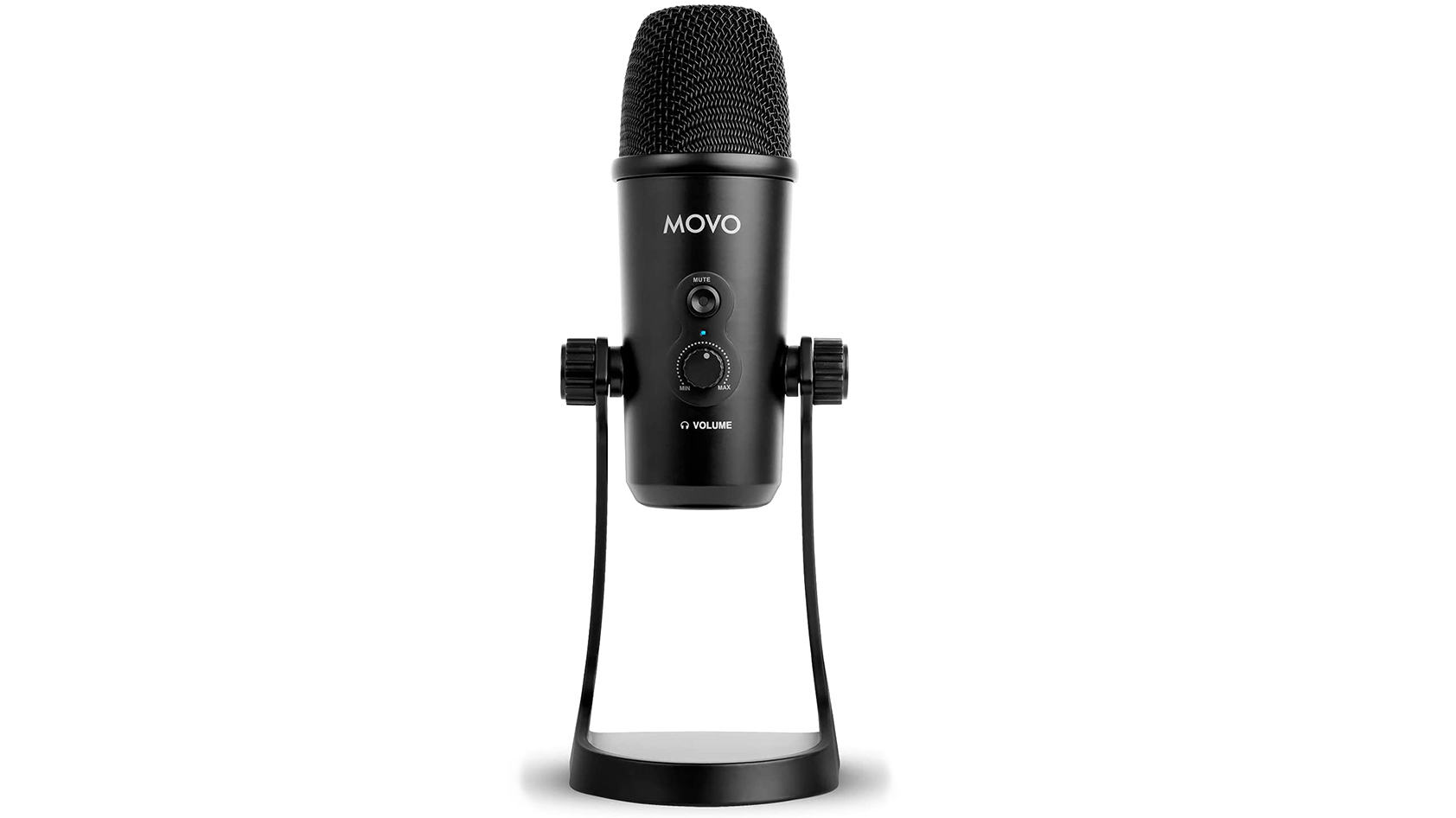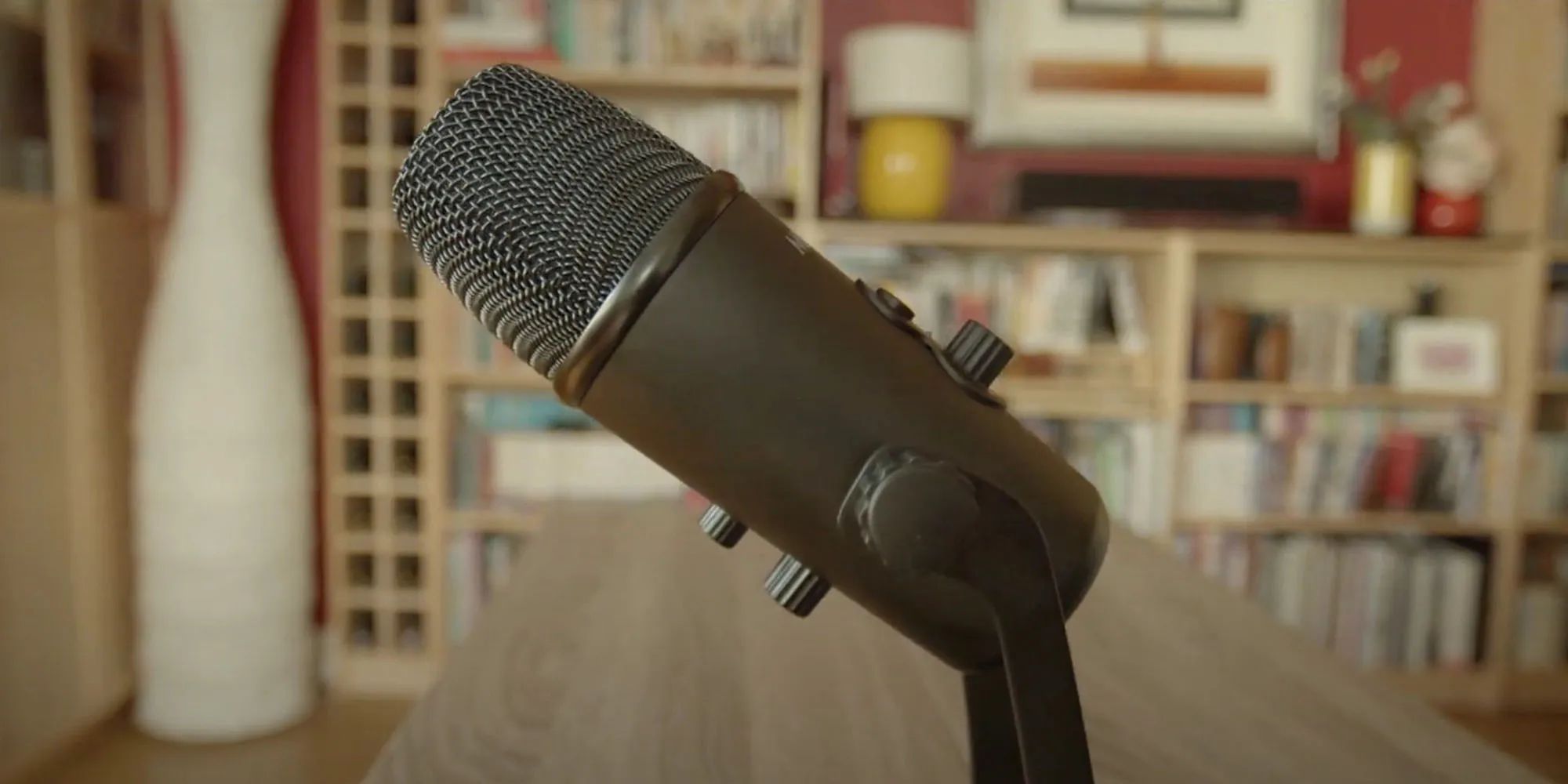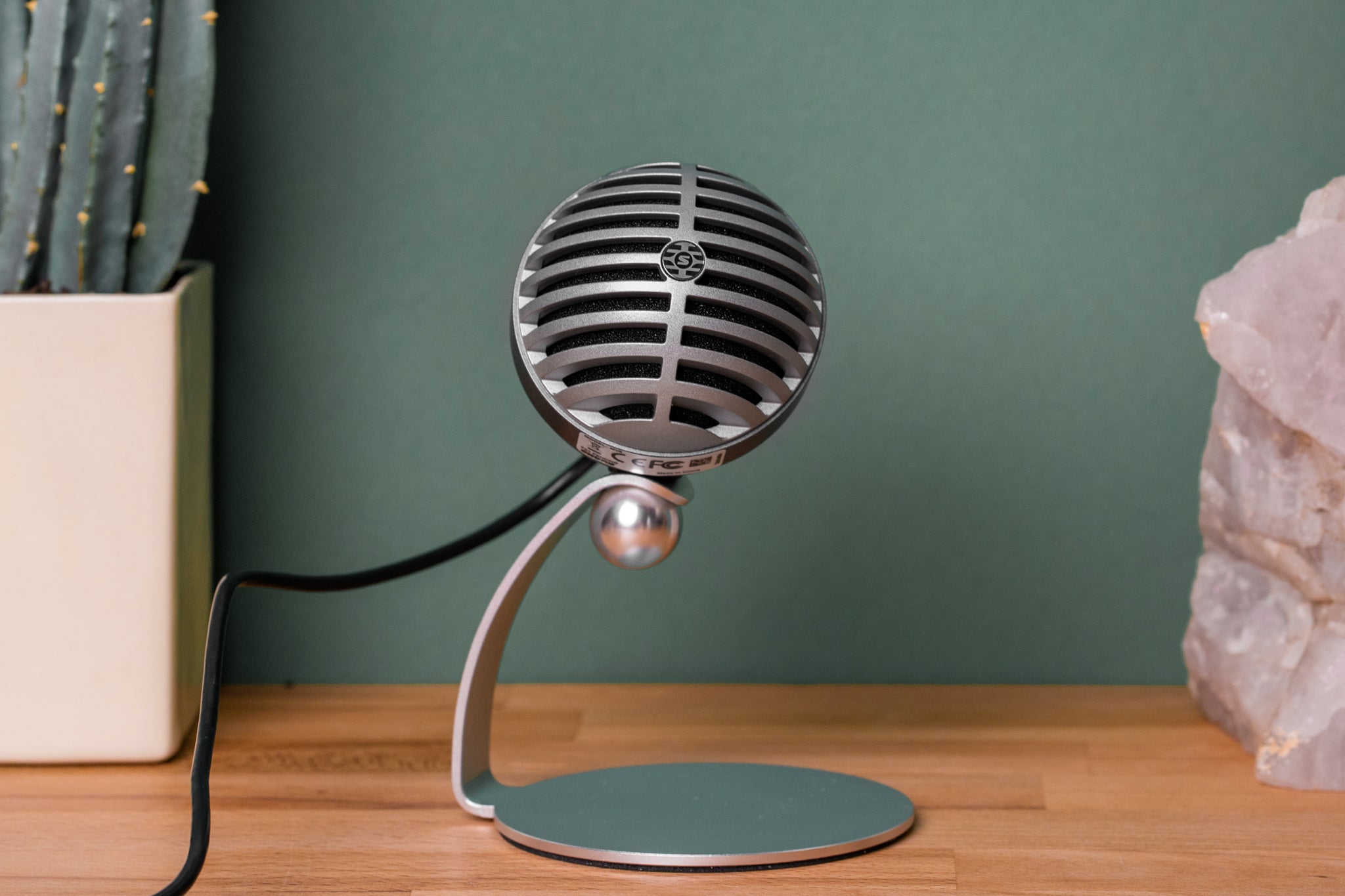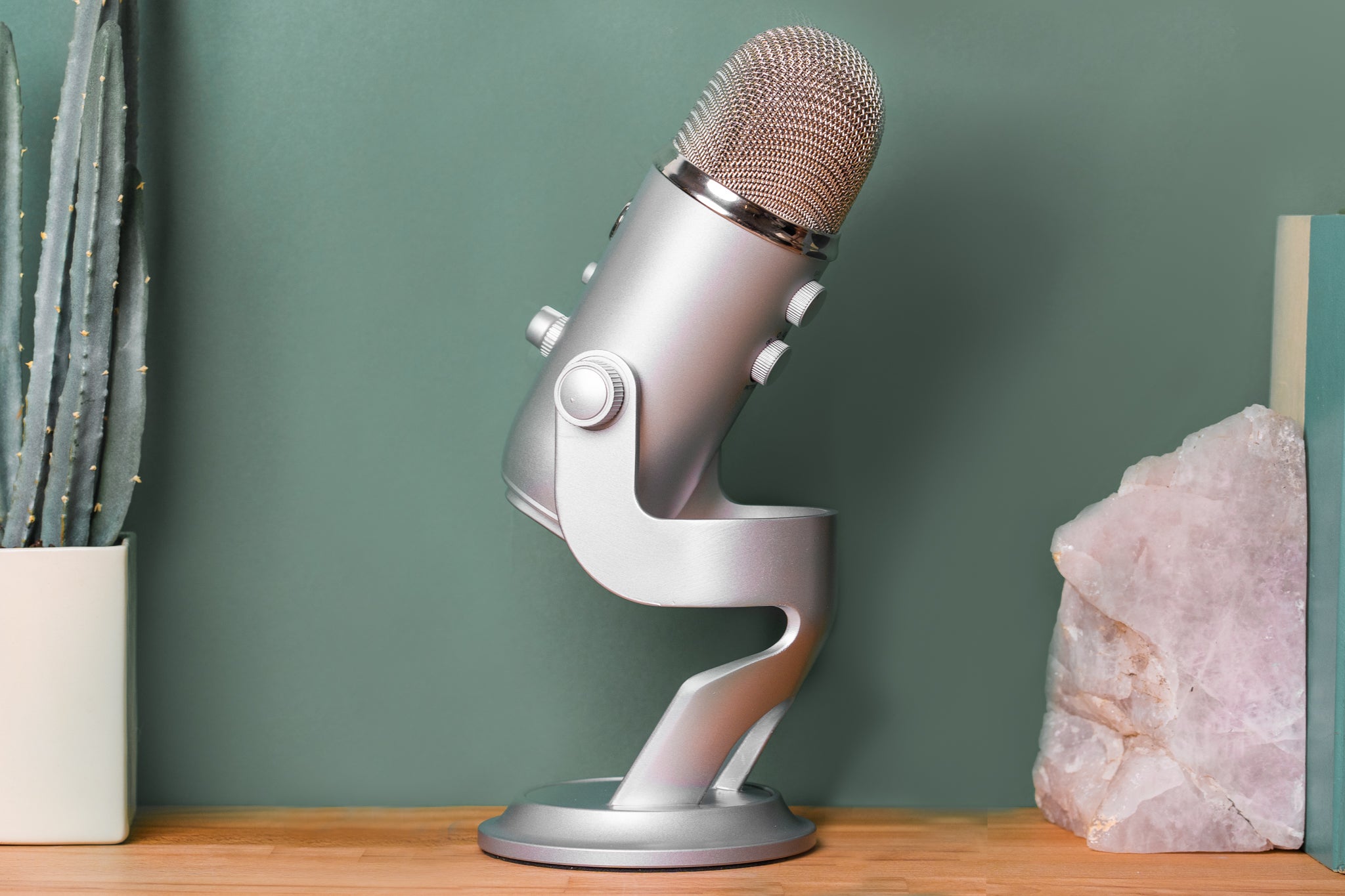Introduction
Welcome to our guide on how to effectively remove background noise from a USB microphone. Whether you are a podcaster, live streamer, or musician, dealing with background noise can be a frustrating challenge. Luckily, there are several techniques and tools available that can help minimize or even eliminate unwanted noise during your recordings or live sessions.
Background noise can be caused by various sources such as fans, air conditioning units, computer noise, or even ambient sounds from outside your recording environment. It can be detrimental to the quality of your audio, making it difficult for your audience to hear and understand your content. However, with the right approach, you can significantly reduce or eliminate these distractions, ensuring your voice is clear and crisp.
In this guide, we will share practical tips and techniques for reducing background noise and improving the overall audio quality of your USB microphone recordings. We will cover adjusting microphone settings, using audio editing software, proper microphone positioning, utilizing a noise gate, using a pop filter, and even creating a soundproofing enclosure. By implementing these strategies, you’ll be able to achieve professional-sounding recordings without the distraction of background noise.
It’s important to note that while some amount of post-processing and hardware adjustments can help minimize background noise, it’s also crucial to address the root cause of the noise. Ensuring that your recording environment is quiet and free from unnecessary disruptions can go a long way in improving the clarity of your audio.
Now, let’s dive into the various techniques and tools you can use to remove background noise effectively and achieve high-quality recordings with your USB microphone.
Understanding Background Noise
Before we delve into the methods of reducing background noise, it’s important to have a basic understanding of what background noise is and why it can be a nuisance in audio recordings. Background noise refers to any unwanted sound that is present in your recording environment. It can include things like buzzing, humming, hissing, or even the sounds of traffic or other people talking in the background.
Background noise can significantly degrade the quality of your audio recordings, making it harder for your audience to comprehend your message or enjoy your content. It can be particularly problematic for podcasters, live streamers, or voice-over artists who rely on clear and crisp sound to create engaging and professional content.
There are various reasons why background noise occurs. It can be generated by external sources such as electronic devices, HVAC systems, or street noise. It can also be self-generated by the recording equipment itself, including the USB microphone, cables, or computer fans.
Understanding the source of the background noise is the first step in effectively reducing it. By identifying the specific noise sources, you can implement targeted solutions to minimize or eliminate them.
It’s also important to consider the type of background noise you’re dealing with. Some noises are constant and consistent, such as a buzzing sound from an electrical device. Others may be intermittent, like the sound of a passing car or a creaking floorboard. Different types of background noise may require different approaches for removal.
Another crucial factor to consider is the signal-to-noise ratio. This refers to the ratio between the desired audio signal (your voice) and the background noise. Ideally, you want your voice to be significantly louder than the background noise, ensuring a clear and intelligible recording. By reducing the overall level of background noise, you can improve the signal-to-noise ratio and enhance the quality of your recordings.
In the next section, we will explore some practical tips for reducing background noise from your USB microphone recordings. These techniques will help you achieve cleaner and more professional-sounding audio, enhancing your content and creating a better experience for your audience.
Tips for Reducing Background Noise
Dealing with unwanted background noise can be a challenge, but with the right techniques, you can significantly improve the quality of your USB microphone recordings. Here are some practical tips for reducing background noise:
- Adjusting microphone settings: Start by adjusting the gain or sensitivity settings of your USB microphone. Lowering the gain can help reduce background noise picked up by the microphone without compromising the volume of your voice. Experiment with different settings to find the optimal balance.
- Using audio editing software: If you still have residual background noise after recording, consider using audio editing software to clean up your recordings. Software programs like Audacity, Adobe Audition, or GarageBand offer various tools and filters that can help remove unwanted noise.
- Proper microphone positioning: Position your USB microphone as close to your mouth as possible while maintaining a comfortable distance. This helps increase the volume of your voice relative to the background noise, resulting in a clearer recording.
- Utilizing a noise gate: A noise gate is a useful tool that automatically mutes or reduces the volume of audio below a certain threshold. By setting the gate appropriately, you can effectively eliminate low-level background noise when you’re not speaking or during pauses.
- Using a pop filter: Pop filters are accessories that help reduce plosive sounds (such as “p” or “b” sounds) that can cause distortion in your recordings. They also act as a physical barrier between your mouth and the microphone, preventing any unwanted breath or saliva sounds from being captured.
- Using a soundproofing enclosure: If you have a dedicated space for recording, consider soundproofing the area. Acoustic panels, foam insulation, and even DIY solutions like heavy curtains can help absorb and reduce external noises.
- Minimizing environmental noise: Take steps to minimize external sounds by choosing a quiet location for recording, closing windows, and turning off any unnecessary electronic devices or appliances in the vicinity.
Remember, achieving perfect silence may be challenging in some situations, but by implementing these tips and techniques, you can significantly improve the overall quality of your USB microphone recordings. Experiment with different approaches and find what works best for your specific recording environment and setup.
In the next section, we’ll explore how to adjust microphone settings to further optimize the audio quality and reduce background noise.
Adjusting Microphone Settings
When it comes to reducing background noise, adjusting the settings of your USB microphone can make a significant difference. Here are some key settings to consider:
- Gain/Sensitivity: The gain or sensitivity setting determines how sensitive your microphone is to sound. Lowering the gain can help reduce background noise. However, be mindful not to set it too low, as it may affect the overall volume of your voice.
- Polar Pattern: USB microphones often come with different polar patterns, such as cardioid, omnidirectional, or figure-eight. Cardioid patterns are most commonly used for vocal recordings as they pick up sound primarily from the front and reject sounds from the sides and rear. Choosing the right polar pattern can help reduce background noise by focusing on capturing the desired sound source.
- Sample Rate and Bit Depth: These settings determine the quality and clarity of your recordings. Higher sample rates and bit depths can capture more detail but may also pick up more background noise. If background noise is a concern, using a lower sample rate or bit depth might be worth considering.
- Monitor/Mixing Levels: By adjusting the monitor or mixing levels, you can control how much of your voice and background noise you hear in real-time. Finding the right balance can help you better monitor your recordings and adjust accordingly to minimize unwanted noise.
It’s important to note that every USB microphone model may have different control options and settings. Refer to the user manual or manufacturer’s website for specific instructions on adjusting settings for your microphone model.
Once you’ve made the necessary adjustments, take some time to test and monitor your recordings. Listen for any changes in the overall sound quality and background noise levels. If needed, continue to fine-tune the settings until you achieve the desired balance between capturing your voice and minimizing background noise.
In addition to adjusting microphone settings, using audio editing software can further enhance the quality of your recordings. In the next section, we’ll explore how to utilize audio editing software to effectively reduce background noise and polish your recordings.
Using Audio Editing Software
When it comes to fine-tuning your USB microphone recordings, audio editing software can be a powerful tool. Here are some techniques you can employ to reduce background noise using audio editing software:
- Noise Reduction: Most audio editing software comes equipped with a noise reduction or noise removal tool. This tool allows you to sample a portion of background noise and apply filters to reduce or eliminate it from the entire recording.
- Equalization (EQ): EQ allows you to adjust the balance of different frequencies in your audio. By identifying and reducing frequency ranges where background noise is prominent, you can clean up your recording.
- De-essing: Some audio editing software offers a de-essing tool to reduce harsh “s” and “t” sounds. These sounds can contribute to background noise and distract from the clarity of your voice.
- Compression: Compression evens out the volume levels in your recording. By reducing the dynamic range, it can help minimize the prominence of background noise during quieter parts of your audio.
- Editing and Trimming: Use audio editing software to remove sections of your recording where background noise is prominent. This can be especially useful during pauses or moments of silence.
When using audio editing software to reduce background noise, it’s important to strike a balance. Be cautious not to overprocess your recordings, as excessive filtering or correction can lead to unnatural and distorted audio quality.
Before applying any noise reduction or EQ settings, it’s recommended to make a backup copy of your original recording. This allows you to revert back to the unaltered version if needed.
Remember that while audio editing software can be a valuable tool, it’s best to aim for clean recordings right from the start. By implementing the previous tips on adjusting microphone settings and optimizing your recording environment, you can minimize the need for extensive post-processing.
In the next section, we will discuss the importance of proper microphone positioning and how it can help reduce background noise.
Positioning the Microphone Properly
The positioning of your USB microphone plays a crucial role in capturing your voice accurately while minimizing background noise. Here are some key considerations when positioning your microphone:
- Proximity: Position the microphone as close to your mouth as possible without compromising your comfort. This helps ensure that your voice is the primary sound source being picked up, while reducing the volume of ambient noise in the room.
- Angle: Point the microphone directly towards your mouth to capture your voice most effectively. Avoid positioning it at extreme angles or facing away from you, as this can result in a weaker and noisier recording.
- Microphone Stand/Arm: Consider using a microphone stand or arm to securely position your USB microphone. This allows for precise adjustment and reduces the chances of accidentally bumping or moving the microphone during your recording sessions.
- Isolation: To further minimize background noise, use a shock mount or a microphone isolation shield. These accessories can help isolate the microphone from vibrations and external sounds, leading to cleaner recordings.
- Recording Environment: Choose a quiet space for recording to minimize external noises. If possible, close windows and doors to reduce the sounds of traffic or other disturbances. Consider using blankets or foam panels to absorb echoes and reverberations that can contribute to background noise.
Experiment with different microphone positions and settings to find the optimal configuration for your specific needs. Record test samples while adjusting the microphone position and listen for changes in the overall sound quality and background noise levels.
Remember to also consider your microphone’s polar pattern (discussed earlier). Understanding the pattern can help you position the microphone in a way that maximizes the capture of your voice while minimizing the pickup of unwanted sounds from the surroundings.
By taking the time to properly position your USB microphone, you can greatly improve the clarity of your recordings and reduce the impact of background noise.
In the next section, we will discuss the use of a noise gate and how it can further enhance the quality of your audio recordings.
Using a Noise Gate
When it comes to reducing background noise in your USB microphone recordings, one effective tool to consider is a noise gate. A noise gate is a device or software plugin that automatically mutes or reduces the volume of audio below a certain threshold. This can be particularly useful during pauses or moments of silence, where background noise may become more noticeable.
Here are the steps to effectively use a noise gate:
- Set the Threshold: Start by setting the threshold level of the noise gate. This determines the volume level at which the gate starts to reduce or mute the audio. Set the threshold just above the level of your background noise, so that it only engages when there is no significant sound.
- Adjust the Attack and Release: The attack and release settings control the speed at which the gate opens and closes when the audio level exceeds or falls below the threshold. Experiment with these settings to find the right balance between smoothly reducing background noise and avoiding unnatural abrupt cuts or fades.
- Use Sidechain Filtering: Some advanced noise gates offer sidechain filtering capabilities. This allows you to apply the noise gate specifically to certain frequency ranges where background noise is more prominent, while leaving the rest of the audio unaffected. By targeting the frequency range of the background noise, you can achieve more precise control over its reduction.
- Monitor and Fine-Tune: After applying the noise gate, monitor your recordings and make any necessary adjustments. Listen for any artifacts or unintended changes to the audio caused by the gate. Fine-tune the settings until you achieve a balance between reducing background noise and maintaining the natural flow of your voice.
Using a noise gate can help eliminate or reduce background noise during silent or inactive parts of your recordings, resulting in cleaner and more focused audio. It’s particularly beneficial for live streaming, podcasting, or any recording where pauses or periods of silence occur frequently.
Keep in mind that while a noise gate can be effective, it’s not a cure-all solution. It works best in conjunction with other techniques, such as proper microphone positioning and adjusting microphone settings, to achieve the desired audio quality.
In the next section, we will explore the benefits of using a pop filter and how it can help reduce unwanted noises in your USB microphone recordings.
Using a Pop Filter
When it comes to improving the audio quality of your USB microphone recordings, using a pop filter can be a game-changer. A pop filter is a screen or shield placed in front of the microphone to minimize or eliminate plosive sounds caused by bursts of air, such as the “p” or “b” sounds. These sounds can create distortion and unwanted noise in your recordings.
Here’s how you can effectively use a pop filter:
- Positioning: Attach the pop filter onto a mic stand or boom arm, positioning it between your mouth and the microphone. The ideal distance is around 2-4 inches, but adjust it according to your comfort and the specific microphone you’re using.
- Creating a Barrier: The pop filter acts as a physical barrier between your mouth and the microphone, diffusing the air expelled during speech. It helps to disperse the airflow and minimize the impact of plosive sounds on the microphone’s diaphragm.
- Choosing the Right Filter Material: Pop filters are available in different materials, such as nylon or metal. Nylon filters tend to be more common and effective at reducing plosive sounds. Experiment with different filter materials to find one that works best for your specific microphone and recording needs.
- Ensuring Proper Maintenance: Regularly clean your pop filter to remove any accumulated dirt, dust, or saliva. This helps maintain the filter’s effectiveness and ensures the best possible filtration of unwanted sounds.
Using a pop filter not only helps in reducing plosive sounds but also acts as a safeguard against other mouth-related noises, such as lip smacks or breaths. It allows you to achieve clearer, more professional-sounding recordings by minimizing these distracting elements.
It’s worth noting that while a pop filter is a valuable tool, it’s important to combine it with other techniques, such as proper microphone positioning and adjusting microphone settings, for optimal results. Creating a solid foundation and taking a comprehensive approach to reducing background noise will yield the best overall outcome.
In the next section, we will explore the benefits of using a soundproofing enclosure to further enhance the quality of your USB microphone recordings.
Using a Soundproofing Enclosure
If you’re looking to take your USB microphone recordings to the next level, considering a soundproofing enclosure can be a wise investment. A soundproofing enclosure, also known as a vocal booth or isolation shield, helps minimize external noise and reflections, providing a controlled environment for recording. It creates a dedicated space that isolates your voice and reduces the impact of background noise. Here’s how you can use a soundproofing enclosure effectively:
- Choosing the Right Enclosure: There are various options available, ranging from portable vocal booths to DIY soundproofing setups. Consider your recording needs, available space, and budget when selecting the right enclosure for you.
- Placement: Position the soundproofing enclosure around your microphone, creating a barrier between you and the surrounding noise. Ensure a snug fit to maximize isolation.
- Material and Construction: Soundproofing enclosures typically consist of materials like foam, acoustic panels, or specialized sound-absorbing materials. These materials help absorb and reduce reflections and external noises that can creep into your recordings.
- Minimizing Structural Vibrations: Place the enclosure on a stable surface or use isolating pads to minimize vibrations that could transfer to the microphone. This further reduces the chances of picking up unwanted noise from the environment.
- Interior Treatments: Consider adding additional acoustic treatment inside the enclosure. This can include foam panels or bass traps strategically placed to further improve the acoustics and reduce standing waves.
A soundproofing enclosure creates a controlled recording environment, allowing you to capture cleaner audio with minimal background noise. It’s particularly beneficial for home studios or situations where recording in a dedicated soundproof room is not possible.
While a soundproofing enclosure can significantly enhance the quality of your recordings, it’s important to optimize other factors as well. Implementing proper microphone positioning techniques, adjusting microphone settings, and utilizing additional noise-reducing tools like pop filters and noise gates will further complement the effectiveness of a soundproofing enclosure.
In the next section, we will wrap up our guide and summarize the key takeaways for achieving high-quality, noise-free USB microphone recordings.
Conclusion
Creating high-quality USB microphone recordings free from background noise is essential for producing professional-level content. By implementing various techniques and tools, you can significantly improve the overall audio quality of your recordings. Here are the key takeaways:
- Understanding the nature of background noise is crucial in addressing its root causes effectively.
- Adjusting microphone settings such as gain, polar pattern, and sample rate can help minimize background noise.
- Utilizing audio editing software allows for further noise reduction and fine-tuning of your recordings.
- Proper microphone positioning helps capture your voice accurately while minimizing background noise.
- A noise gate can automatically reduce or mute background noise during pauses or moments of silence.
- Using a pop filter helps minimize plosive sounds and unwanted mouth-related noises.
- A soundproofing enclosure provides a controlled environment for minimizing external noise and reflections during recordings.
It’s important to note that while each technique plays a significant role in reducing background noise, combining multiple approaches will yield the best results. Experiment and fine-tune the settings and techniques to suit your specific recording environment and needs.
Remember to consider the balance between reducing background noise and preserving the natural flow of your voice. Overprocessing or removing all background noise may result in an unnatural-sounding recording.
By implementing these strategies, you’ll be able to achieve noise-free USB microphone recordings, delivering content that is clear, professional, and engaging to your audience.







